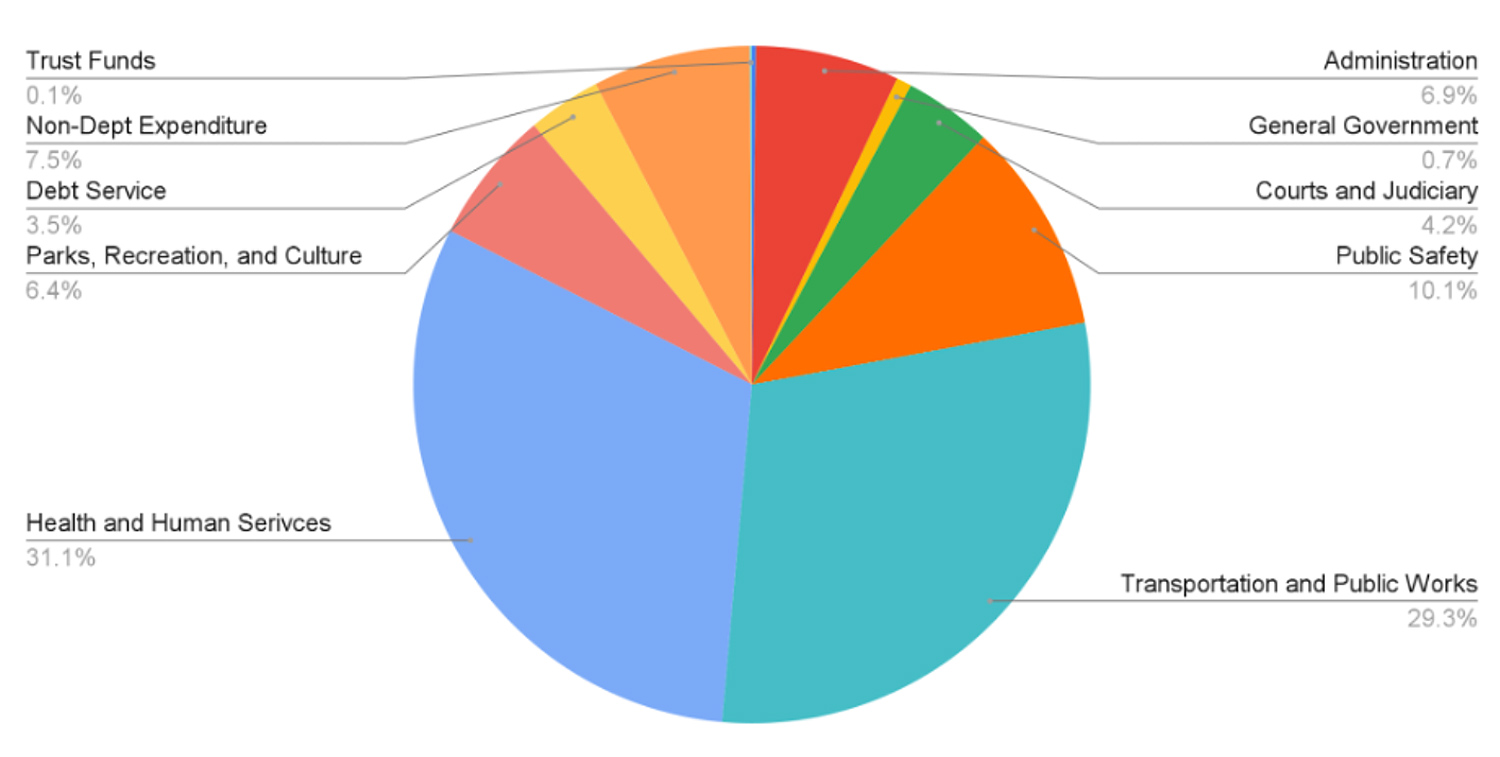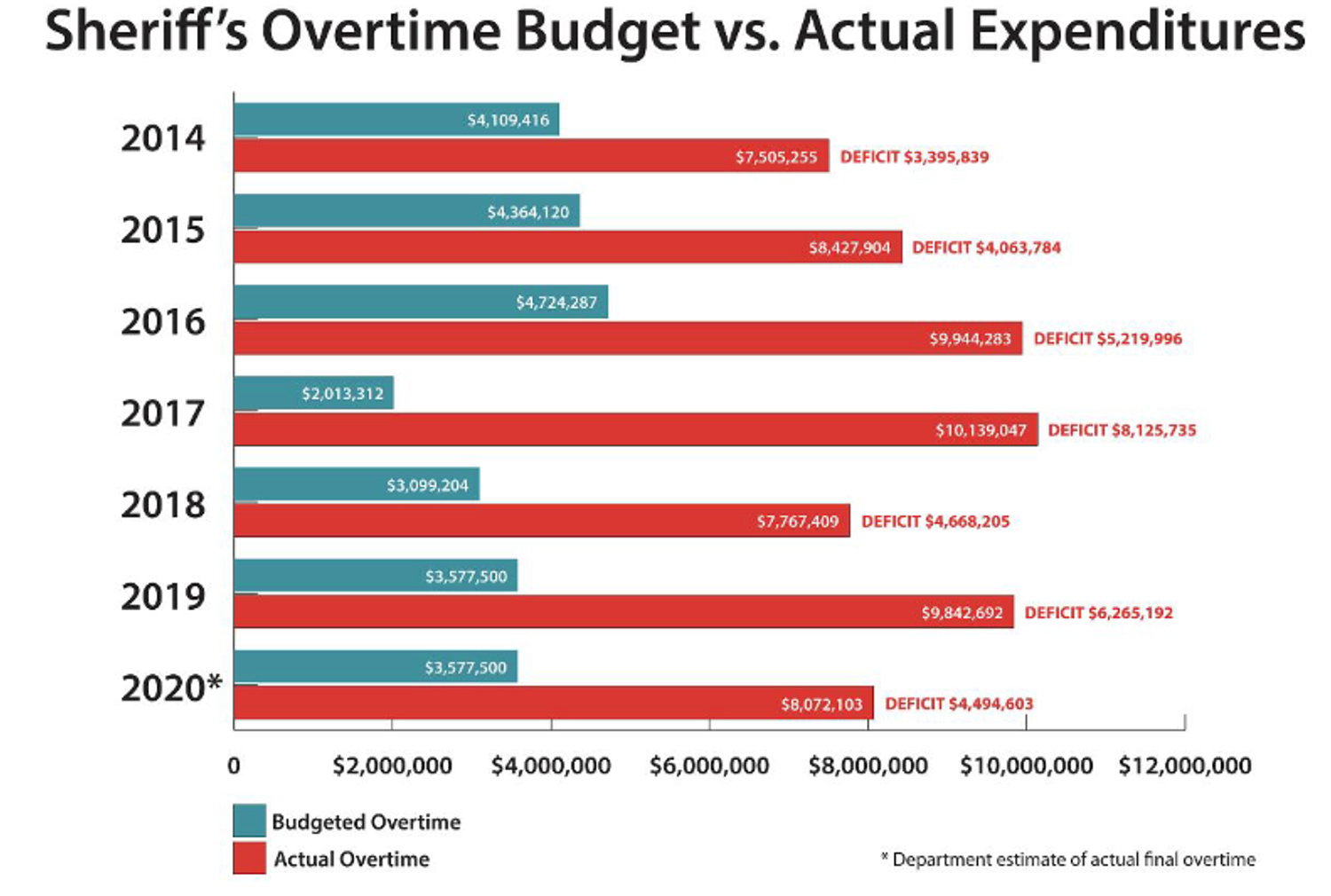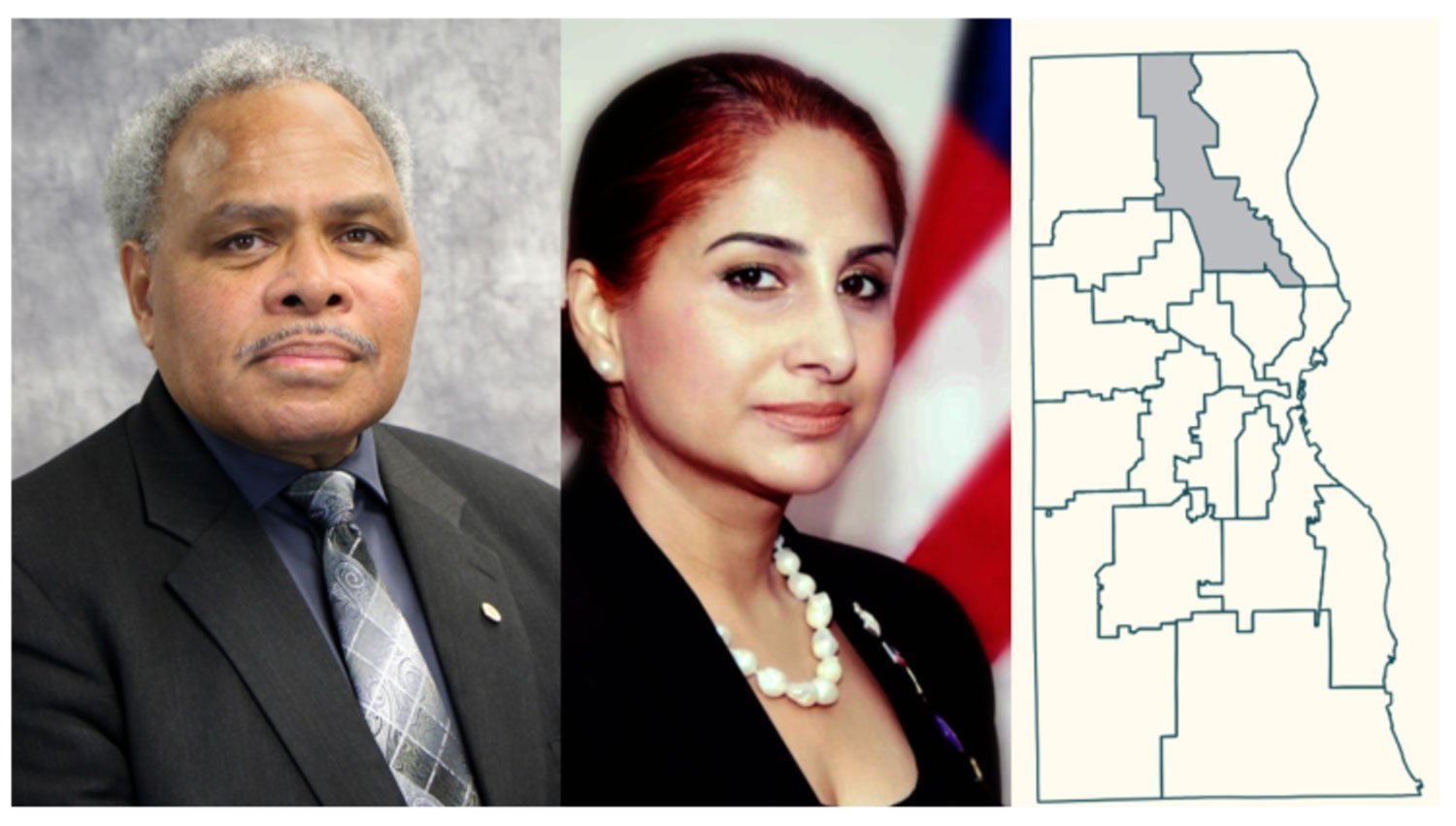On Tuesday, April 5, Milwaukeeans will vote in elections for the County Board of Supervisors.
Or will they?
After all, for Milwaukeeans—and for millions of Americans—local politics tend to be synonymous with the workings of the city, not the county.
Cities have a way of monopolizing all of the symbolic trappings of a place. As a rule, superheroes deal with mayors and city police chiefs, not county officials. Baseball parks and airports—even if they remain in the county’s hands—typically bear the simpler, more recognizable name of the metropolitan city. And so it is that murmurings about local politics, however infrequent, tend to throw the spotlight on Mayors and Alders, not Executives and Supervisors. On the April 5 ballot, it is the City of Milwaukee’s mayoral election—and not the County races—that is attracting the most public attention.
Perhaps unsurprisingly, elections for Wisconsin’s county governments tend to be far less competitive than their municipal counterparts. Between 2012 and 2020, barely more than 30% of county races across the state featured more than one candidate; more than half of city races were typically contested over the same period. Milwaukee fares no better. In April, only six of the County Board’s 18 seats will be contested.
But ignoring Milwaukee County elections because they are obscure is not only to dismiss the workings of a $1.28 billion government with expansive power over public transportation, parks, and social services, it is to relinquish control to the unheavenly chorus of local politics, which typically sings with an upper-class accent. So here’s why you should vote in the Milwaukee County Board elections:
County decisions have a profound impact on your quality of life
While counties are less visible than cities (political scientists often refer to them as “forgotten governments”), they impact the quality of life in metropolitan areas in profound ways. Like Wisconsin’s 71 other county governments, Milwaukee County is simultaneously a local jurisdiction in its own right, an administrative branch of the state government, and a provider of crucial public services. Its policies affect your daily life in unseen ways, including how you get to work, housing affordability, and your rights as a member of this community.
One can learn a lot about what Milwaukee County does for its residents, and what it has the potential to do, by looking at how it spends money. Let’s crack open the County’s most recent budget:

Milwaukee County Budget Expenditure (Capital and Operating) by Functional Area, 2022 Budget (Image based on data from Milwaukee County)
The expenditure summary above reveals that Milwaukee County is a provider of critical social services. The government’s top expenditure item is consistently the Department of Health and Human Services (DHHS). That covers everything from providing resources to Milwaukee’s aging and disabled populations to inpatient and outpatient behavioral healthcare. Among the programs that the County’s DHHS provides is Housing First, an outreach program that has helped to reduce the County’s homeless population over the last four years. Thanks to the work of groups like the Milwaukee Autonomous Tenants Union and legislators like County Supervisor Ryan Clancy, the County also manages a right-to-counsel program, Eviction Free MKE, which has helped to slow the pace of evictions since it was first implemented in September 2021.
The County also makes sure that its residents can get to work on time and safely. Transportation and Public Works accounts for more than a quarter of the County’s most recent budget. This involves managing two airports and the system of County Trunk Highways. It also means operating the Milwaukee County Transit System (MCTS), whose buses provide nearly 29 million rides each year. Like public transit systems around the country, MCTS has faced challenges during the pandemic, with staffing shortages causing gaps in service over the last two years. If that’s something that affects your daily commute, consider talking to your County Supervisor about it.
Like local governments everywhere, the County also invests heavily in public safety, with more than a quarter of the County’s nearly 4,000 full-time positions located in the Sheriff’s Department or the House of Corrections. The Sheriff’s Department has come under scrutiny in recent years for exceeding its overtime budget by $36.3 million between 2014 and 2020. Figures released by the County’s Comptroller showed that Sheriff Earnell Lucas and his predecessor engaged in a variety of fiscal maneuvers to offset overtime expenses, while former Sheriff David Clarke routinely exceeded the overtime budget, full stop. Given that the ballooning police expenditures have squeezed numerous other County priorities, the Board of Supervisors approved enhanced oversight measures last year, though some elected officials pushed the County to go further by redirecting Sheriff’s office funds to other priorities.

Ballooning overtime payments at Milwaukee County Sheriff’s Office (Image: Milwaukee County)
Another issue confronting all County services is how to deal with what is sometimes described as a structural deficit, a “perfect storm” of state-mandated responsibilities and revenue constraints that seriously jeopardizes Milwaukee County’s ability to fulfill responsibilities to its residents. In short, over the last few decades, the state of Wisconsin has heaped mandated policy obligations on the County all while restricting its ability to raise revenue and depriving it of shared state revenue to support a host of programs, from transportation to youth services. County residents haven’t felt the bite quite yet, as federal pandemic relief aid has helped to minimize cuts in key service areas. Yet if the County does not find a way of dealing with this soon, it will—in just a few short years—lack the money to fund essential services, including bus routes, emergency response services, and support for seniors and the disabled population.
One place where the deficit is becoming increasingly visible, however, is Milwaukee County Parks. If you’ve lived in the area for any length of time, you know that the County’s system of over 150 parks—plus nine urban beaches, beer gardens, and 125 miles of trails—is an unparalleled local resource. Yet that resource, initially planned out by the Socialist Party in the early 20th century, is now in jeopardy. Between 1989 and 2019, the parks budget declined by more than 50%. With more than $400 million in deferred maintenance, virtually no support from the state, and revenues that are highly contingent on user fees and sales, Milwaukee’s “Emerald Necklace” is now at risk, part of a disturbing trend of worldwide reductions in green space. For example, under new contractual terms with a Chicago-based company, the parks system recently allowed closures of areas of Bradford Beach to allow for private parties—a decision made without public involvement or County Board oversight. As Arijit Sen of UW-Milwaukee’s School of Architecture and Urban Planning has suggested, the encroachment of private concessions onto public land can “deter people from accessing what is rightfully public space.”
Yet regardless of what one thinks about business permitting on the beach, the fact remains that the County has not yet produced–—nor is privatization likely to be—a long-term solution to the parks system’s funding crisis.
These are only a few of the major issues facing Milwaukee County. All of them cut to the core of what it’s like to live here. And all of them will be on the April 5 ballot.
Eighteen seats, six head-to-heads
Do you know who your County Supervisor is?
Even if you think you know, you should check again, because the County just approved new Supervisory District maps after the 2020 census, and some boundaries have changed. What hasn’t changed is that only a fraction of the 18 County Board seats—six to be exact—feature electoral competition this year. Let’s look at them in some detail:
An open seat in District 12

Josh Zepnick, Juan Miguel Martinez, District 12
District 12, which runs north-south from the Menomonee Valley to West Howard Avenue, is the only seat featuring an open race in the April 5 election. There, union organizer and freelance journalist Juan Miguel Martinez squares off against former State Rep. Josh Zepnick, who lost his assembly seat after being accused of kissing two women without their consent.
Zepnick, who finished first in the February primary with 41% of the vote, has emphasized his years of experience, and has been accruing the support of figures in the county old-guard, including former County Executive Chris Abele. He has also been endorsed by IBEW Local 494. Zepnick’s top issue is the County’s fiscal stability, which he hopes to secure by working with the County’s “partners in State Government on a bi-partisan basis” to allow the County to impose a new sales tax. This may prove difficult, as the state legislature has repeatedly denied efforts to enhance local governments’ fiscal capacity.
Martinez, who won 30% of the February primary vote, has devoted his career to elevating the voices of workers as a union organizer and community correspondent with Milwaukee Area Service and Hospitality Workers Organization (MASH), an organization that focuses on raising standards for job quality and was instrumental in the formation of the Fiserv Forum workers’ union. Martinez has been endorsed by several prominent organizations in Milwaukee politics, including Citizen Action Wisconsin, Voces de la Frontera, the Working Families Party, and the Milwaukee Chapter of the Democratic Socialists of America. The most important issues for Martinez are properly funding the County’s parks—four of which are located in the 12th Supervisory District—the expansion of affordable housing, and the availability of strong union jobs.
Three incumbents and three challengers

Eric Rorholm, Sheldon Wasserman, District 3
Three County Supervisor races will pit an incumbent against a challenger on April 5. The most contentious of the three races can be found in District 3, which includes the East Side and part of Walker’s Point. The race’s incumbent is Sheldon Wasserman—an OB/GYN who currently chairs the County’s Parks, Energy and Environment Committee—who won 51% of the primary vote. His opponent is Eric Rorholm, a recent graduate of Marquette University who once chaired Marquette’s College Democrats and now serves as a social media and marketing lead with Our Wisconsin Revolution. Rorholm finished with 25% of the primary vote, beating out architect Jennifer Current.
Wasserman has received endorsements from several current state and local officials. His website describes his key issues as support for the County parks, bus transportation, and the sheriff’s office. That final priority has placed Wasserman at odds with progressives on the County Board. In debates over the most recent County budget, which was dominated by questions about the Sheriff’s budget, he helped to kill an amendment to provide $50,000 to support a collaborative effort with the City to support a Registered Nurse position that would have provided nursing services to the homeless population dealing with substance abuse disorders, severe mental illness, and various mental health needs. After the amendment passed the Finance Committee on a 4-1 vote, Wasserman spoke against it on the floor, suggesting that a Registered Nurse in the field “is not going to do that much,” whereas an Advanced Practice Nurse “would result in a huge financial cost.” The measure ended up failing by a vote of 8 to 9.
Rorholm, Wasserman’s challenger, is endorsed by Voces de la Frontera, Citizen Action of Wisconsin, the Milwaukee Area Labor Council, United Auto Workers, the Working Families Party, and the Milwaukee Democratic Socialists of America. He has framed his campaign as a challenge to the status quo. “I am not a landlord or a millionaire” Rorholm says, describing himself instead as a tenant and a wage worker. “I know firsthand how difficult it is to make ends meet right now, all while the rich are richer than ever. It’s time that working families in District 3 had someone fighting for them.”

Donald Schwartz, Patti Logsdon, District 9
The second race featuring an incumbent can be found in District 9, located in the far southwest corner of the County, and includes Hales Corners and Franklin. The incumbent in the race is Patti Logsdon, an accountant who has held the seat since 2018. She has consolidated several endorsements from Republican officials at multiple levels of government, including gubernatorial candidate Kevin Nicholson. Her opponent is Donald Schwartz, a local entrepreneur who previously served as a trustee of the Hales Corners Village Board and the President of the Hales Corners’ Chamber of Commerce. While Schwartz’s website describes the candidate as a “fiscal conservative” who supports increasing public services through the use of more public-private partnerships, Schwartz has also attempted to style himself as a moderate candidate who does not “subscribe to the liberal or conservative political ideology.”

Liz Sumner, Karen Gentile, District 1
The third election in this category will take place in District 1, which includes River Hills, Bayside, Fox Point, Whitefish Bay, Shorewood, and part of Glendale. Given the results in the primary, this race is likely to be uneventful. Here, incumbent Liz Sumner, who won 80% of the primary vote, is defending her seat against Karen Gentile. Sumner is a Shorewood business owner who has pledged to focus on “County parks, the environment, and financial oversight” in her second term. Gentile, once a county sheriff in California, appears to have targeted her website to a small base of conservative vaccine skeptics by pledging to enforce the “HIPPA [sic] law” and to end nonexistent restrictions on the unvaccinated.
Two current supervisors face challengers in new districts

Willie Johnson, Jr., Purnima Nath, District 2
In two upcoming races, redistricting has meant that two current supervisors will face challenges in newly drawn districts. That includes Willie Johnson, Jr., formerly District 13 Supervisor, who will now be running in the newly drawn District 2 (which stretches north from Capitol Drive to include neighborhoods in northwest Milwaukee, sections of Glendale, and Brown Deer). He’ll be going up against Purnima Nath, a supporter of former President Donald Trump (and promoter of conspiracy theories) who unsuccessfully ran for Milwaukee County Executive in 2020.
Johnson, who has held a County Board seat since 2000, recently told the Journal Sentinel he plans to focus on budget issues, support for minority and women-owned businesses, responding to demands for human services, the opioid crisis, and increases in the rate of crime. Nath’s website suggests she is running on a conservative platform, with the twin goals of increasing support for law enforcement and lowering taxes.

Peter Burgelis, John Weishan, Jr., District 15
The second of these races—and the more competitive of the two—is in newly drawn District 15, which stretches from Alverno in the south to Washington Heights in the north, and includes the Village of West Milwaukee. John Weishan, Jr., who currently serves as Supervisor for District 16, will face Peter Burgelis, who works in the mortgage industry and has recently been active in Milwaukee’s nonprofit scene.
Weishan—who has served on the County Board since 2000—has received endorsements from several local officials as well as three key union locals representing transit workers, firefighters, and sheet-metal workers. Weishan’s priorities in the campaign are, as he recently told the Journal Sentinel, stopping the expansion of the I-94 East-West Freeway, increasing support for the Sheriff’s Office, and creating a countywide health department.
While Weishan is a seasoned veteran of the County Board, Burgelis has evidently accrued his own store of political capital. His website lists endorsements from the Milwaukee Area Labor Council, the United Auto Workers, and Citizen Action of Wisconsin, as well as more than a dozen prominent state and local officials. And while this race features less ideological heat than others on the April ballot, Burgelis has staked out a clear position against selling off the County parks. He adds that he wants to “[h]old departments accountable for reckless overspending and prioritize community values and community priorities,” and specifically calls out the County Sheriff Department’s “unchecked overtime” pay which “would be better spent on human services and needs.”
Save the date: 4/5/22 (unless you vote early)
If you live in one of these six districts, spend some time over the next two weeks getting to know the candidates running for office (and if you’re ready before April 5, you can vote early). County Board decisions shape policies that affect you as a commuter, a renter, a homeowner, a worker, or a taxpayer. Even if you don’t live in a district with a competitive election, consider reaching out to your Supervisor. Send an e-mail, make a phone call, or schedule a meeting. Democracy is not just what happens at the ballot box—it’s in the interactions between elected officials and constituents on the hundreds of days between elections.
And whatever you do on April 5—or afterwards—demand more substantive coverage of county decision-making. The obscurity of these races, and of county government itself, is a deterrent to the participation of ordinary people in crucial decisions that will shape their lives. The first step to changing things is being able to see them for what they are.
For information on how to vote on April 5, and what’s on your ballot, visit https://myvote.wi.gov. Information on how to vote early can be found HERE.
Exclusive articles, podcasts, and more. Support Milwaukee Record on Patreon.
RELATED ARTICLES
• Next Milwaukee Mayor: Cavalier Johnson and Bob Donovan move on to April 5 election

